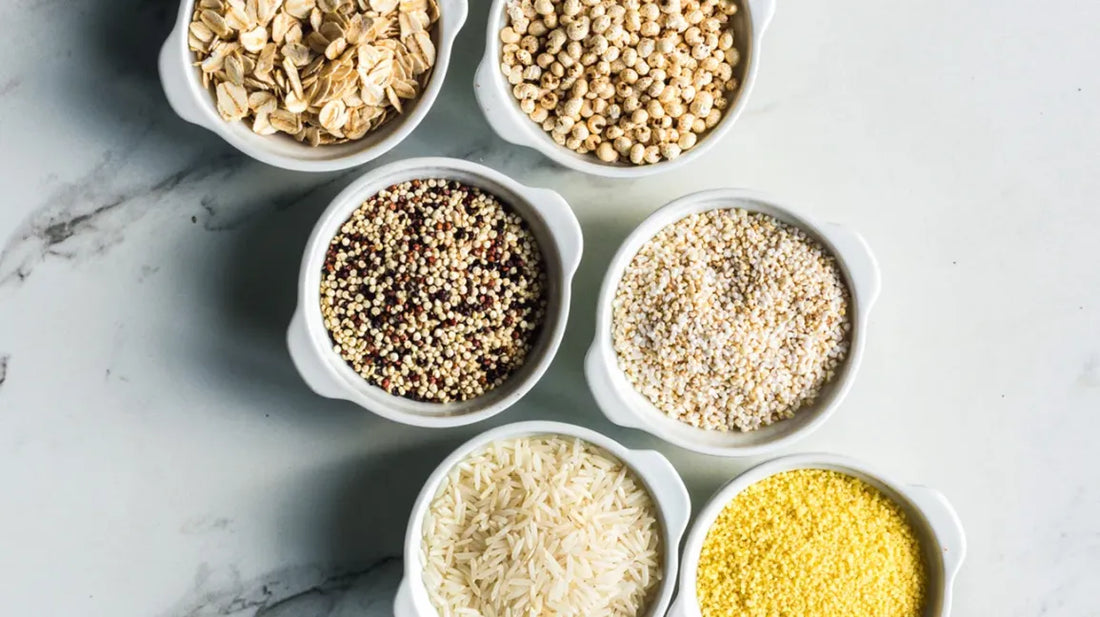
Grain-Free Dog Food: A Smart Choice for Overweight Dogs?
Share This Post
As a pet parent, you want your dog to live a long, healthy life, and diet plays a huge role in that. Grain-free fresh dog food has gained popularity for its potential to support specific health needs, especially for overweight or obese dogs. Unlike other options, fresh food offers a nutrient-rich, low-calorie solution that’s gentle on your dog’s body and irresistible to their taste buds. We’re here to break down why grain-free fresh dog food is a game-changer for weight management, what to watch for, and how to choose the best for your pup—no fluff, just the facts to help you make informed choices.
What Is Grain-Free Fresh Dog Food?
Grain-free fresh dog food is a ready-to-eat meal, gently cooked and sealed in pouches or trays using retort technology to stay shelf-stable until opened. These meals skip grains like wheat, corn, or rice, using ingredients like lentils, peas, or sweet potatoes alongside high-quality meats. With 70-80% moisture, they’re naturally hydrating and packed with whole-food nutrients. FEDIAF ensures these complete diets meet strict standards—18% protein and 5.5% fat for adult dogs, 25% for puppies—making them a balanced choice. For dogs carrying extra weight, grain-free fresh food’s lower calorie profile is a standout feature.
Why Grain-Free Fresh Food Helps Overweight Dogs
Carrying extra pounds can strain your dog’s joints, heart, and energy levels, but grain-free fresh dog food can help turn things around. Grains are carb-heavy, adding calories that pile on weight. By replacing them with fiber-rich, low-calorie ingredients like peas or sweet potatoes, grain-free fresh meals cut calories while keeping portions satisfying. For example, a typical grain-free fresh food might have 800-1000 kcal/kg, compared to grain-based diets that can push higher due to starchy carbs.
The high protein content—often 40-50% on a dry matter basis (DMB)—in grain-free fresh food helps dogs feel full longer, reducing the urge to beg for more. Lean meats like chicken or fish provide amino acids to maintain muscle during weight loss, ensuring your dog slims down without losing strength. FEDIAF confirms that these diets can meet all nutrient needs while supporting weight management, making grain-free fresh food a vet-recommended option for chubby pups.
Plus, the high moisture content (70-80%) aids hydration, which supports kidney health and helps overweight dogs feel satisfied with smaller servings. It’s a win-win for shedding pounds and boosting overall wellness.
Additional Benefits of Grain-Free Fresh Food
Beyond weight control, grain-free fresh dog food offers unique perks:
- Allergy Support: FEDIAF notes that only about 10% of dogs have food allergies, usually to proteins like beef, not grains. But for rare grain sensitivities (e.g., wheat), grain-free fresh food can soothe itching or tummy troubles, thanks to its clean, meat-focused recipes.
- Gentle Digestion: The whole-food ingredients and high moisture make grain-free fresh meals easy to digest, ideal for dogs with sensitive stomachs or conditions like inflammatory bowel disease.
- Palatability: Dogs go wild for the rich aroma and soft texture, making it perfect for picky eaters or seniors who need encouragement to eat.
These benefits, combined with lower calories, make grain-free fresh food a powerful tool for overweight dogs needing a health reset.
Potential Risks: What to Watch For
Grain-free fresh dog food is a great choice, but it’s not without considerations:
- Heart Health Caution: Some grain-free diets, particularly those heavy on legumes like peas, have been linked to dilated cardiomyopathy (DCM), a heart condition possibly tied to taurine imbalances. High-quality grain-free fresh foods, with meat as the primary ingredient, minimize this risk by prioritizing bioavailable nutrients.
- Cost: Fresh food’s premium ingredients and careful processing can be pricier than other options, but the health benefits—especially for weight loss—often outweigh the cost.
- Quality Matters: Not all grain-free fresh foods are equal. Some may still use starchy fillers like potatoes, which can sneak in extra calories. Always check for meat-first recipes.
FEDIAF ensures safety and balance, but choosing a grain-free fresh food with high protein and minimal fillers is key to maximizing benefits for your overweight dog.
Is Grain-Free Fresh Food Necessary for Every Dog?
For dogs at a healthy weight, grain-inclusive fresh food with digestible grains like rice can be just as nutritious, providing energy and fiber. FEDIAF confirms grains are safe and beneficial for most dogs, and only those with confirmed grain sensitivities (via vet testing) or weight issues need grain-free. But for overweight or obese dogs, grain-free fresh food’s lower calorie content and high protein make it a standout choice. The added hydration and meat-focused recipes support weight loss while keeping your dog satisfied and healthy.
All fresh dog foods, grain-free or not, must meet FEDIAF’s nutrient standards. The difference lies in tailoring the diet to your dog’s needs—weight management, in this case—with grain-free fresh food leading the pack.
Practical Tips for Choosing Grain-Free Fresh Food
- Consult Your Vet: Confirm your dog’s weight loss goals and check for grain sensitivities. Vets can recommend daily calorie targets (e.g., 50-70 kcal/kg body weight for weight loss).
- Check Calorie Content: Look for grain-free fresh foods with 800-1000 kcal/kg to keep calories low. Avoid those with starchy fillers like potatoes.
- Prioritize Protein: Ensure the food meets FEDIAF’s protein minimums (18% for adults, 25% for puppies) with animal-based sources. Aim for 40%+ DMB protein for satiety and muscle support.
- Read Labels: Choose recipes where named meats (e.g., “chicken,” “fish”) lead, not legumes or fillers. This ensures low calories and high nutrition.
- Track Progress: Weigh your dog monthly and monitor for energy, coat health, or rare DCM signs (e.g., fatigue, coughing). Adjust portions with vet guidance.
- Transition Slowly: Mix grain-free fresh food into your dog’s current diet over 7-10 days to avoid digestive upset.
Common Myths Debunked
- Myth: Grain-free is only for allergies. Fact: It’s also ideal for weight loss due to lower calories and higher protein.
- Myth: All grain-free foods are low-calorie. Fact: Some include starchy fillers, so meat-first fresh foods are best for weight control.
- Myth: Grains are bad for dogs. Fact: Most dogs digest grains well, but grain-free fresh food suits overweight dogs needing fewer calories.
The Bottom Line
Grain-free fresh dog food isn’t just a trend—it’s a powerful tool for overweight or obese dogs. Its lower calorie content, high protein, and hydrating moisture help pups shed pounds while staying strong and satisfied. For dogs without weight issues, grain-inclusive fresh food works great, but for those extra pounds, grain-free fresh meals are a smart, vet-friendly choice.
Talk to your vet, check those labels, and consider grain-free fresh dog food to help your dog slim down and thrive. We’re here to guide you toward choices that keep your pup’s tail wagging and their health in top shape.
